What Are The Top 10 Essential Call Center KPIs?
Call centers are an indispensable component in customer service and successful operations for any business. They don’t just help you keep the existing customers happy but can also reel in new customers and revenue for your business.
Monitoring and managing call center performance is important. Not paying attention to this will lead to cost overruns and unhappy customers.
Thus, it is important to know and understand the right KPIs if you want to properly manage your call center performance. The problem is that there are too many KPIs and at times choosing the right ones becomes difficult for managers.
Fret not! I have compiled a list of essential call center KPIs that you can use to monitor, manage and boost your call center performance.
But first, let us learn what Call Center KPIs are!
What are Call Center Key Performance Indicators (KPIs)?
Call Center KPIs are measurements of key performance areas of customer service operations that call center managers use to determine the success of their operations.
These indicators help managers determine whether a call center is meeting its performance goals and how well are they performing.
In case the targets are not met, the KPIs help managers identify the exact problem area. This way the managers can undertake initiatives to resolve issues hindering performance.
The right set of KPIs will enable a manager to maintain and improve performance in the best way possible.
With that, I hope you have a clear idea about what KPIs are and how they help call center managers.
We can now move on to knowing and understanding the top 10 essential KPIs for call centers.
Top 10 Essential Call Center KPIs
Here is a list of 10 KPIs that will help you improve call center performance in all areas of operation.
Average Speed of Answer (ASA)
The Average Speed of Answer or Average Time to Answer is the measure of how long it takes between receiving an inbound call and an agent answering it.
The two main factors that affect this KPI are the availability of agents to answer calls and the call routing efficiency of your call management system.
This metric, however, does not account for the time a caller takes to navigate through an IVR system. This is because the caller is not waiting for an agent but is in the process to reach the correct person for assistance.
This metric helps managers assess the efficiency of their agents, and their availability and is a key indicator for capacity planning.
Call Abandonment Rate

The Call Abandonment Rate measures the percentage of calls that are disconnected before an agent can answer these calls.
This metric is a very important one and measures the performance of the call center as a whole. Knowing how many customers are annoyed enough to abandon the call before being serviced can help you mitigate the flaws in your process flow.
There are multiple reasons why a caller may disconnect a call before an agent answers it. Long wait times, complicated IVR menu, slow call routing and many such factors result in abandoned calls.
The average call abandonment rate for call centers ranges between 2% to 5%.
First Call Resolution (FCR)
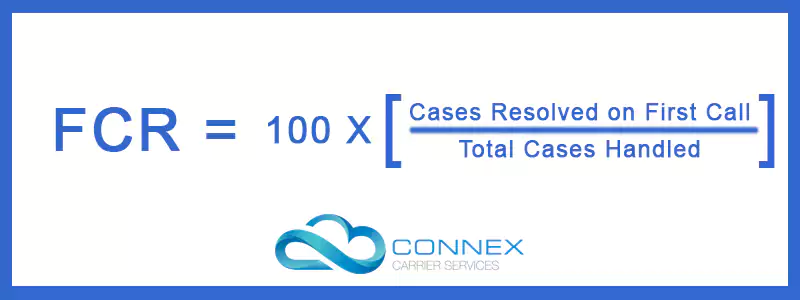
First Call Resolution, often abbreviated as FCR, is a measure of a call center’s ability to resolve a customer’s problem or query in the first call itself.
If your agents can resolve customer issues in the first call itself, it eliminates the need for additional calls or follow-ups. Having a high FCR means less workload for your call center agents and cost savings associated with having to handle fewer calls.
FCR is also an important metric for Customer Experience. Using FCR, a call center manager can effectively manage and maintain a rich customer experience. FCR also drives other CX metrics such as Customer Satisfaction (CSAT) and Net Promoter Score (NPS).
Average Handle Time (AHT)
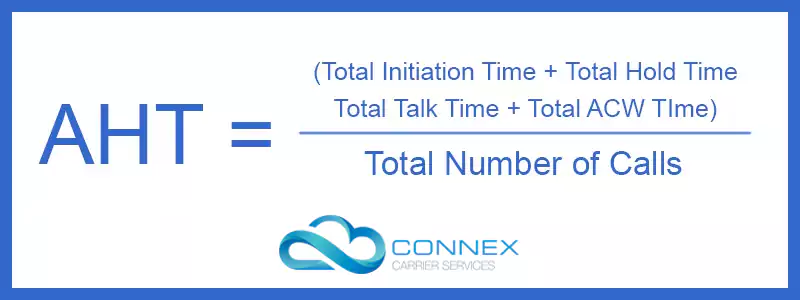
The Average Handle Time or AHT is the complete duration of a customer call. The duration is measured in minutes from the instance the customer call is answered to the moment the call ends.
This indicator helps managers assess how efficiently the call center agents are handling and processing customer problems and queries.
Unlike other metrics that involve averages, the goal here is to not minimize the AHT but to ensure it’s within Industry standards.
AHT is used in conjunction with CSAT and NPS to ensure the delivery of a rich customer experience. AHT allows you to identify and work on various operational areas that need improvement such as agent training, call routing, data management, etc.
Average Time in Queue
Average Time in Queue is a KPI that measures the average duration of time a caller spends while waiting to be connected to an agent.
Call center managers shy away from using this metric due to the fluctuating call volumes throughout the day. However, it is possible to use this KPI effectively by keeping the peak and off-peak average time in the queue separate.
By keeping these separate, you’ll get a clearer idea about what areas you need to improve upon during peak and off-peak times to minimize average time in queue.
Proper assessment of this KPI helps you unlock a lot of potential to improve. You can also have different call routing strategies for peak and off-peak times to minimize the time in the queue.
Average Hold Time
Average Hold Time or commonly referred to as Hold Time is the duration of time an agent keeps a customer on hold to perform some required actions to assess the customer.
There are instances when an agent needs to look up details about a customer, fetch necessary information or seek supervisory assistance to resolve the customer query. In such instances, the customer call is put on hold.
This metric reveals the inefficiencies in the performance of individual agents and also the inefficiencies in the operational framework of the call center as a whole.
The aim with hold time is to minimize it as much as possible. Longer hold times degrade the customer experience, thus, it is necessary to pay attention to this KPI.
Average after-call Work (ACW) Time
Average after-call Work Time is the average time it takes for an agent to input required information and process a raised ticket between two calls.
ACW time is also a component of Average Handle Time and directly impacts the total call duration with the customer. Longer ACW time results in increased operational costs for the call center as the agents process fewer calls in a given time.
Monitoring ACW time allows managers to address inefficiencies in ticket processing procedures. Based on the findings, the managers can implement a quicker procedure or acquire a better customer management system.
Thus, by minimizing ACW time, you can save on operational costs and improve your operational efficiency.
Cost per Call - Resolution (CPC-R)
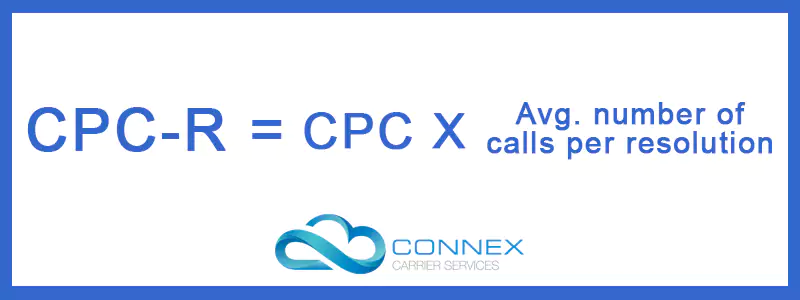
The Cost per Call - Resolution (CPC-R) metric measures the efficiency of the call center as a whole for resolving customer problems and queries. As this metric involves costs, it becomes an important financial metric for call center managers.
CPC-R is a derivative of the most widely used metric Cost per Call (CPC). While CPC measures only the cost of a call, CPC-R measures the average cost of a resolution.
This makes it a superior choice. Minimizing CPC will not improve your bottom line if it takes two or more calls to resolve customer issues and queries. Managing and minimizing CPC-R translates into improved profits due to cost reduction.
Agent Utilization Rate (AUR)
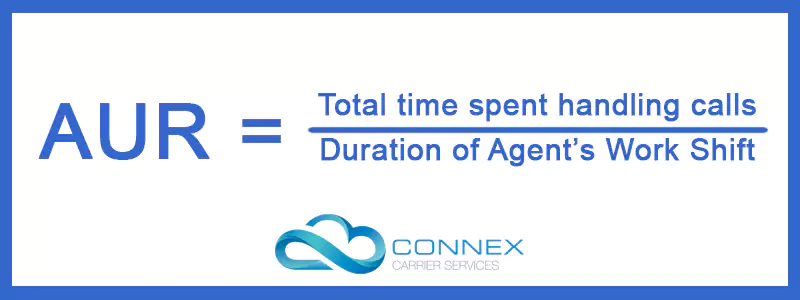
The Agent Utilization Rate is a KPI that is measured by dividing the total work done by the total workforce.
As you’re already aware, call center operations are workforce intensive. The majority of a call center’s operational expense is made up of payouts to agents. Thus, it becomes necessary to ensure you’re maximizing your workforce’s utility.
AUR allows you to understand how well you’re able to utilize each agent in your workforce. A good AUR is considered to be a percentage above 75%.
In case your AUR is below 70%, you can undertake corrective measures to ensure all the agents are being utilized to the best of their capabilities.
Agent Turnover Rate
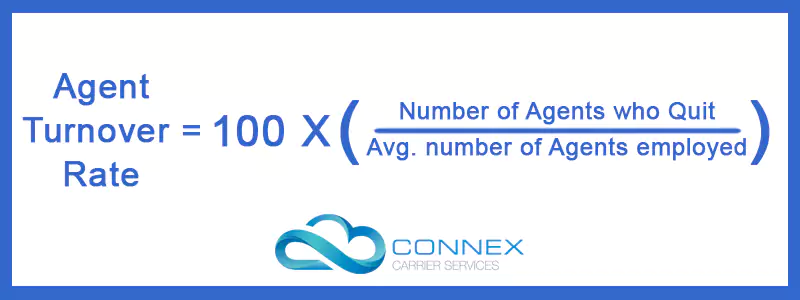
Agent Turnover Rate is defined as the percentage of agents leaving a call center every year. For workforce-intensive operations that call centers carry out, it is necessary to prevent agents from leaving the organization.
Compared to other industries the employee/agent turnover rate is higher for the call center industry. This problem easily makes it into the top 5 call center challenges list for most people.
Replacing an agent can cost you upwards of 100% of a departing agent’s annual salary. Thus, the involved costs alone make this KPI a very important one for any call center manager.
Monitoring this KPI will enable managers to take corrective actions to prevent agent attrition, reduce operational costs and improve profit margins.
With that, we’re at the end of our list of 10 Essential Call Center KPIs!
Conclusion
Having the right set of Key Performance Indicators (KPIs) enables your call center operations to grow. Monitoring all the key areas of performance for a call center helps you to understand which ones need attention and which ones can be improved.
Having the right insights into your operations allow you to make informed decisions to improve overall performance, and efficiency, minimize costs and maximize customer satisfaction.
Use this list of KPIs as a guide. Experiment and find which ones work the best for you!
























































































































